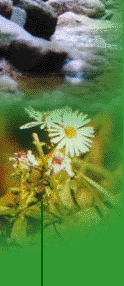Description:
The Midland Snake
(Nerodia sipedon pleuralis) is a heavy bodied aquatic snake which can be commonly
confused with the venomous Cottonmouth/Water Moccasin (Agkistrodon piscivorus).
This snake has a highly variable color pattern. Most have a light brown to grey background color and have dark brown to black
blotches/bands on their backs. Also on the side of the snake there are square blotches. The average length for this snake
is 2-4ft long, and the record is just over 5ft long. The juveniles are usually lighter than the adults but will darken with
age.
Habitat:
The Midland
Water Snake can be found in any aquatic habitat in their range which includes swamps, on
the edges on ponds which they are found basking on tree over hanging, lakes, marshes, on edges of rivers and streams, even
on a few barrier islands.
Prey:
The Midland Water Snake mostly feeds on fish, frogs, and salamanders.
Abundance and Behavior
The Midland Water Snake is one of the most common aquatic snakes
found in the Southeast. They can be found at any aquatic habitat which has a good population of fish and amphibians. The Midland Water Snake is for the most
part nocturnal (comes out during the night) but they can be found during the day sunning themselves in braches overhanging
bodies of water and also on rocks. They can be easily confused with the Cottonmouth/Water Moccasin (Agkistrodon piscivorus) because of several reasons. First off they are both heavy body snakes that live in the
same habitats. Also when disturbed the water snake will make its head as triangular as possible, open its mouth, and strike
repeatedly. Most of the time though they will try to get in the closest body of water and disappear under rocks and mud. If
in a tree branch the water snake will dive immediately into the water and swim away.



